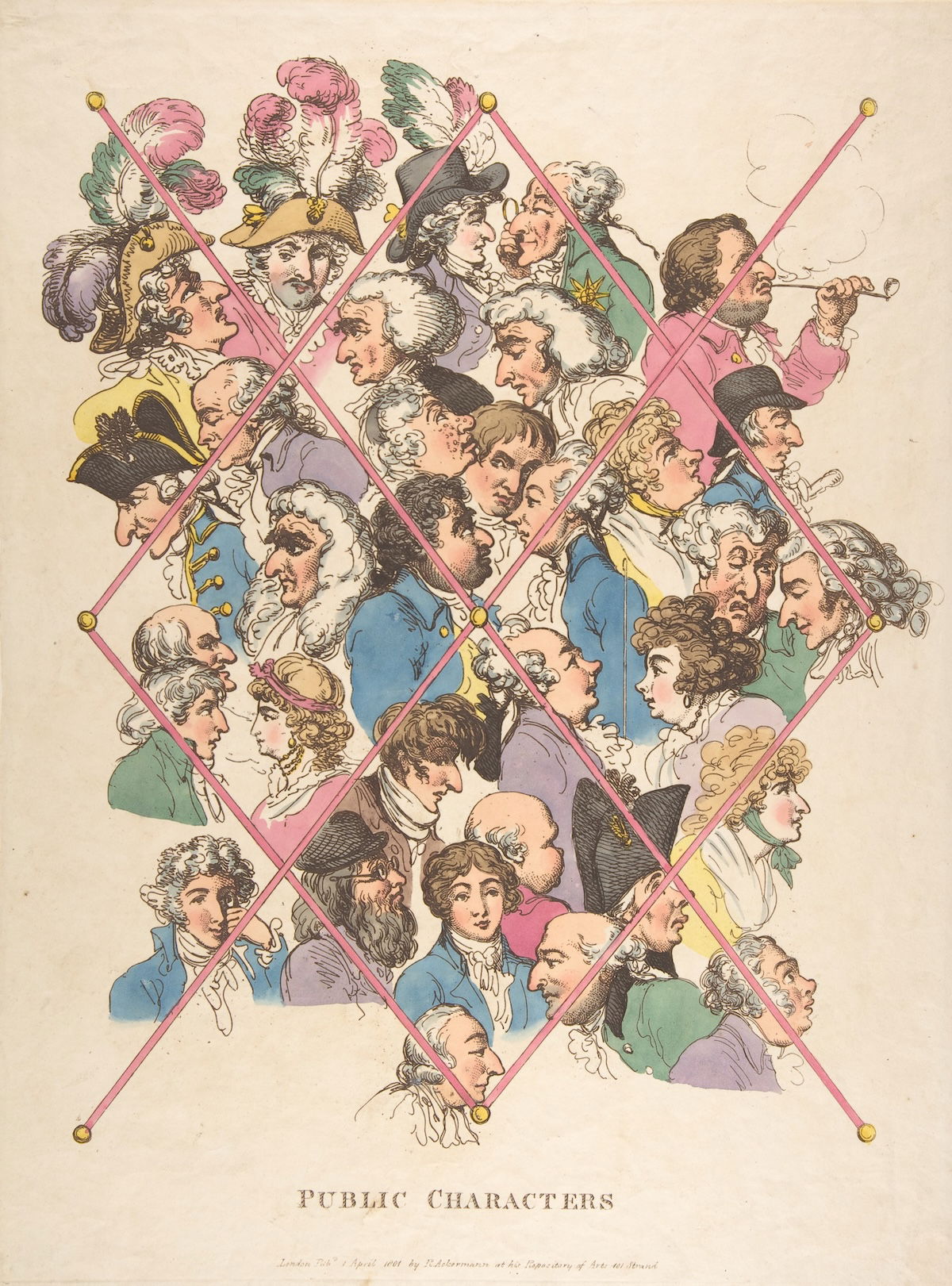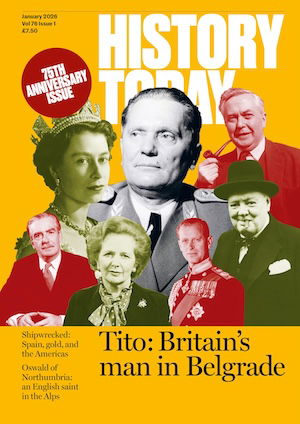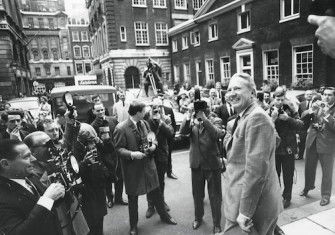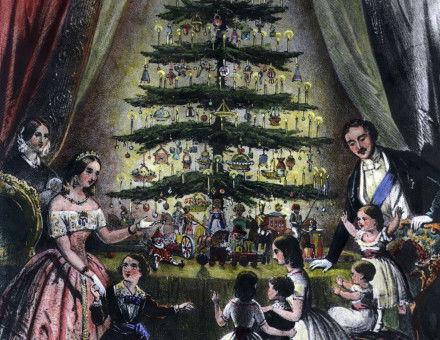‘The Rage of Party’ by George Owers review
They go low, we go lower. The Rage of Party: How Whig Versus Tory Made Modern Britain by George Owers offers up the origins of Britain’s fractious political culture.

What’s in a word? In 1965 the great Cambridge historian Professor (later Sir) J.H. Plumb delivered the Ford Lectures at Oxford, on the topic of political stability in 18th-century England. One of those lectures was titled ‘The Rage of Party’. In it, Plumb expressed profound suspicion of Lewis Namier’s famous thesis, then tremendously fashionable, that principles matter not a jot and the sole driver of 18th-century politics was individual lust for glory. One needed only to feel the heat rising from public debate in this era to appreciate the importance of Whig and Tory, argued Plumb: ‘Party was real and it created instability.’ Two years later, in 1967, Plumb’s greatest student, Geoffrey Holmes, published his masterpiece of historiography, British Politics in the Age of Anne, in which Plumb’s scepticism of the Namierite position morphed into something more subtle. For Holmes, it was fundamentally the structures of partisanship, not its passions, that defined the era. Plumb’s ‘rage of party’ became Holmes’ ‘age of party’.
Now the ‘rage’ is back. George Owers’ tremendously entertaining new book is an unabashedly narrative account of the twists and turns of Whig and Tory through a period of immense turmoil, both foreign (protracted wars with France and Spain) and domestic (a royal coup, a crisis of succession, and ten general elections within 25 years). In some respects, this is a deeply unfashionable endeavour. To be sure, there has been some excellent scholarship on the origins of party in areas such as intellectual history (recent work by Max Skjönsberg comes to mind), but narrative historians have typically found it difficult to articulate what was at stake in early 18th-century politics, particularly when set against the grand set pieces of the Civil Wars and Protectorate a generation earlier. Owers negotiates this problem with considerable brio, combining the high politics of court and parliament with a broader-brush history of ideas, religion, and culture. Equal attention is devoted to sex lives, medical ailments, and boozing as to parliamentary division lists and electoral tallies. It makes for a heady cocktail of policy and personality.
What drove people into opposite political camps? Neither party was a monolith and there were outliers on both sides, but the chief differences lay in three areas: government, religion, and foreign policy. For most Whigs, the origins of government were secular; for most Tories, they were sacred. In religion, Whigs lobbied for the toleration of Protestant dissenters whereas Tories cleaved to a vision of the Church of England as an engine of religious persecution, securing uniformity by coercion and oppression. And in foreign policy, Tories sought a quick and cheap end to what they perceived as a needlessly destructive war with France, whereas Whigs sought total victory whatever the cost. Whigs favoured the moneyed interest, Tories the landed interest. Whigs accused Tories of being agents of French popery; Tories accused Whigs of being schismatic republicans. Whigs feared foreign absolutism, Tories domestic anarchy. By the start of the 18th century the world itself was being refracted through this lens. On the reading of a parliamentary bill in 1703, Jonathan Swift imagined all London’s street cats divided up into Whig and Tory, claws bared, hackles raised.
At the heart of Owers’ narrative is the tussle for political dominance during the reign of Queen Anne between the venal, self-enriching lords who comprised the Whig ‘Junto’, and the rabble-rousing high-church zealots of the Tory Commons. The great hero in all this is Robert Harley, who during a long career attempted to steer successive governments along an increasingly narrow middle-course between the extremes of either side. A decent case can be made for Harley, not Robert Walpole, as the nation’s first ‘prime minister’ (a term of abuse in the period rather than an official office). His political acumen was legendary. He was the first high-ranking politician to fully appreciate the power of the press, employing Swift and Defoe as sympathetic journalists and funding the production of pamphlets supporting the government position. As Owers puts it, Harley used this ‘mastery of the shady arts’ to carve a ‘calm, moderate path through a thicket of bone-headed partisanship’.
Antagonists appear on all fronts: while the rank-and-file Whigs never pose much of a threat (on one page they ‘fluff it’, on the next they ‘bungle it’, and on the third they ‘crumble’), the financial resources of the Junto make them a dangerous enemy to Harley’s centre ground; Sidney Godolphin, with all the dexterity of a rusty lawnmower, sometimes threatened to sink the ship by sheer incompetence; eventually, though, it is the ‘totally ruthless pragmatist’ Henry St John who lands the metaphorical killing blow, cutting his own throat in the process. For all its comic moments, the final act of the book, in which Harley finally runs out of road, is nothing short of tragic.
Owers is eager to pack everything in, which makes for an occasionally breathless narrative. He covers a lot of ground and his readers, like his protagonists, don’t get to enjoy much downtime. Things just keep happening. In one chapter alone, two rakehells kill one another in a duel, Jonathan Swift disarms a booby trap, a gang of aristocratic hooligans attack people on the street, and the great peace treaty of Utrecht, which has loomed for so many pages, is finally brokered. Nor is this a work of profound literary subtlety. Those in glass houses shouldn’t throw stones, I know, but the prose occasionally feels part Top Gear, part Tatler. Single-sentence paragraphs close chapters with a sledgehammer thump while figures such as Marlborough, the ‘dashing, dishy courtier’, appear to have stepped freshly coiffured from the society gossip pages. Yet I say this with a smile not a sneer, because the effect is deeply enjoyable. Owers’ enthusiasm for the period and its characters is palpable. Allow yourself to be swept along by it and you’ll have a tremendous time.
-
The Rage of Party: How Whig Versus Tory Made Modern Britain
George Owers
Constable, 576pp, £30
Buy from bookshop.org (affiliate link)
Joseph Hone is the author of a book about Robert Harley, The Paper Chase: The Printer, the Spymaster, and the Hunt for the Rebel Pamphleteers (Chatto & Windus, 2020).






